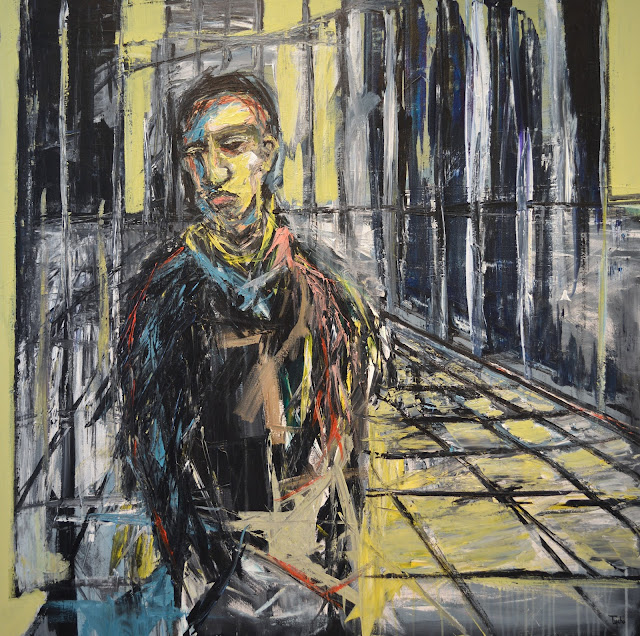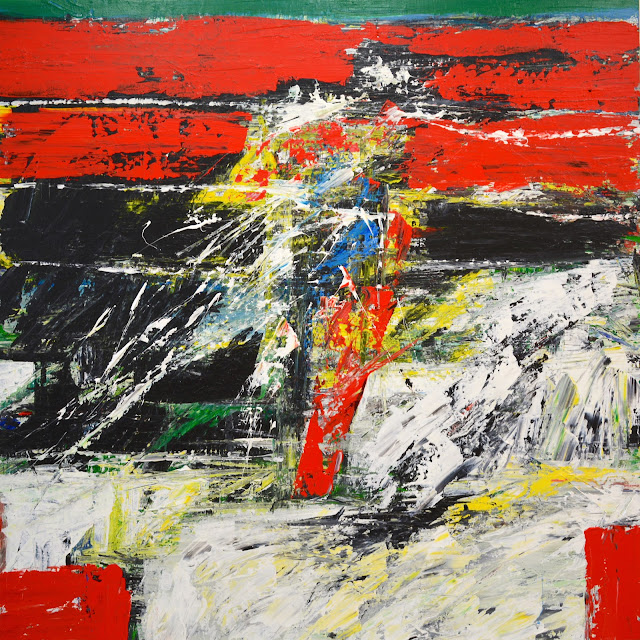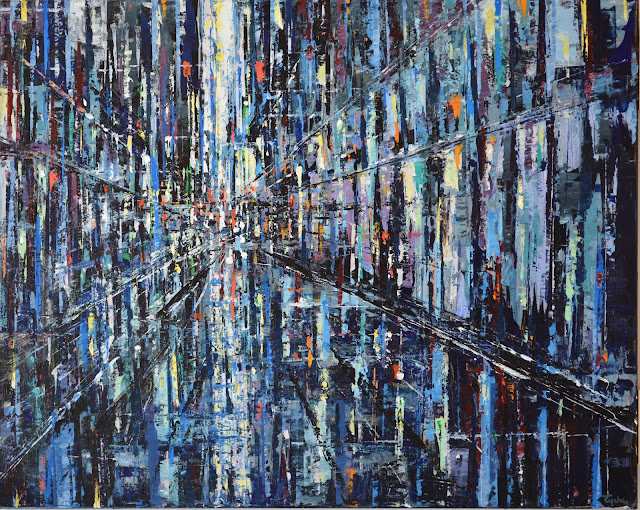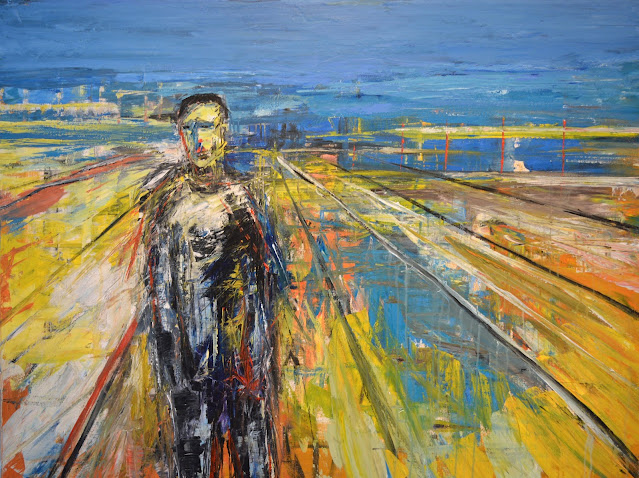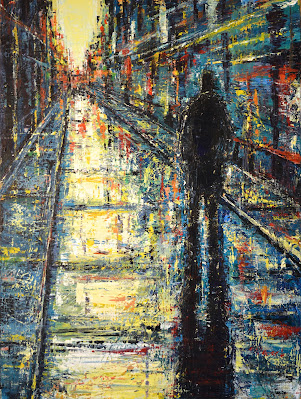Expressionist painter David Tycho
David Tycho was born in Vancouver and graduated from the University of British Columbia, where he studied painting under renowned Canadian artist Gordon Smith. For the past 30 years, David’s painting has straddled the genres of abstraction and representation, at times more experimental and intuitive and at other times more reflective of his surroundings. His works are inspired by subjects ranging from pristine wilderness areas, to urban sprawl, to the people he encounters along the way. Tycho has exhibited his work in New York, Los Angeles, Seattle, Geneva, Brussels, Zurich, Singapore, Manila, Toronto, Montreal and Vancouver, and his paintings are collected worldwide.
Where do you get your inspiration from? Do you prefer more abstract art?
I am very affected and inspired by extreme environments. In recent years these have ranged from the pristine wilderness areas of western North America to the congested urban centres of New York and Tokyo. It’s the in-between or transitional areas that do not interest me much. My work is very expressionistic and straddles or alternates between the genres of abstraction and representation. I am not at all interested in realism—it just doesn’t suit my personality or tastes. To be honest, I don’t even understand it.
City Boy 120 x 120 cm, acrylic on canvas, 2018
What is your special process? What is something you definitely do not like? How does it impact your art?
I like to have a relaxing eight-kilometre bicycle ride along the Vancouver seaside en route to my studio, and once I have arrived and set up, I like to work in uninterrupted silence. The ride helps me clarify in my mind what I want to do that day, and the uninterrupted silence helps me to develop and maintain my creative focus and flow. I turn off my phone and don’t listen to music. People dropping by my studio uninvited is my ultimate pet peeve. Interruptions of this kind steal my focus, and in most cases undermine the rhythm I have established while developing the painting.
Elemental No. 18 120 x 120 cm, acrylic on canvas, 2019
Which artist(s) or which types of artists do you admire?
In recent years, I have been looking more and more at Alberto Giacometti, Richard Diebenkorn, Anselm Kiefer, and to a lesser degree Francis Bacon. They work or have worked at parallel degrees of representation and abstraction to me, and I like seeing how they have approached their subjects and solved their aesthetic problems. I have stolen a few licks from all of them, as well as from many others. After learning from those who have come before me, I can head off in my own direction with greater vision and confidence, having more and better tools in my toolbox.
Elemental No. 31 100 x 150 cm, acrylic on canvas, 2019
What are the highlights of your most recent series of art? What is your technique?
The highlights are a few urban pieces I have done in which I have found the elusive seam between abstraction and representation. You can see that the painting is about a city, but you also realize that just a few added or removed strokes could make the painting completely abstract. I want to imply—not illustrate. I’m not sure why I am drawn to this reductive idiom, but it has become my goal in recent months. The paintings are like archetypes or essences of “urban-ness” rather than descriptions of particular cities or streets. I start with a number of photos, choosing the elements from each that I like, then I put the photos away and work in an entirely intuitive way. I primarily use palette knives, but occasionally brushes, rollers, sticks, rags and even my hands.
Urbania No. 10 60 x 75 cm, acrylic on canvas, 2020
Are you preparing anything for post-coronavirus, or for recovery? What is it about?
Travel has always been a love of mine, so I’m hoping to be able to travel again soon. My travels have always had an impact on my art, and new places and experiences generally inform my subjects, sooner or later. I sometimes let experiences and ideas ferment for a while before attempting to execute them visually.
Figure in a landscape No. 2 90 x 120 cm, acrylic on canvas, 2018
What made you work on the "Humans in Isolation" piece(s) before the crisis hit?
Perhaps it was initiated by a time in my life when I felt somewhat isolated, both socially and artistically, but I think it was more a statement about the human experience in general. I wanted to show my characters removed from social or environmental stimuli, each in a moment of vulnerability and self-reflection. Some of my followers and collectors were a bit apprehensive about the work at first, but I believe the isolation caused by the pandemic has injected the paintings with more relevance and poignancy for many viewers. People empathize with the works because during our imposed seclusion, we have all been forced to slow down and perhaps reflect on our lives. I’m sure many people have come to heightened insights about their existence on this planet, and their relationship to others. Not to diminish the countless tragedies that COVID-19 has inflicted on so many families and countries, it may have a long term positive effect, both for the planet and for humanity as a whole. Nature can seem very cruel, but it is never wrong.
Sundown 100 x 75 cm, acrylic on canvas, 2018
In your opinion, which (one) activity or industry will NOT change (since many people think that everything will not be the same as before)?
The overwhelming urge for many people to be creative, and document the human experience through art, music, writing, dance, etc. This will never go away. Therefore, the arts in general will continue to thrive as a vital part of our collective lives, both on the creative and on the consuming sides. Also, our need to be an active part of a community has become a preoccupation. Isolation is probably a good experience in small doses, but as a way of life it can be excruciating for many. I think we will appreciate and savour socializing with our friends and family more, since humans are essentially very social animals, and we crave interaction, especially when it has been taken away.
Urbania No. 8 90 x 60 cm, acrylic on canvas, 2018
More info:
Website: https://www.tychoart.com
Instagram: https://www.instagram.com/davidtychoart
Facebook: https://www.facebook.com/davidtycho

